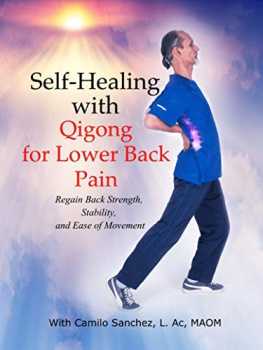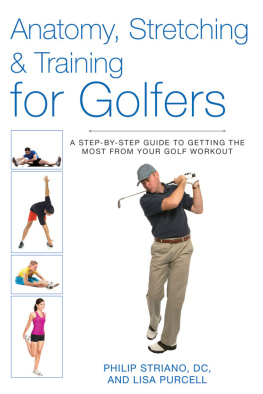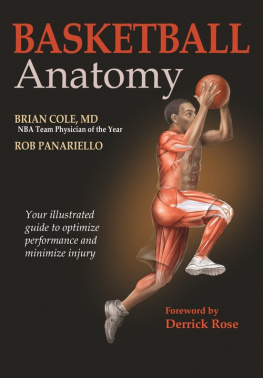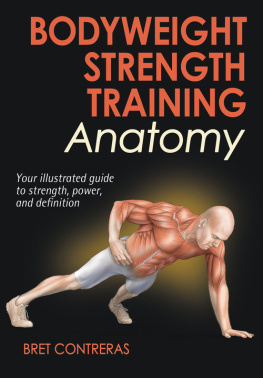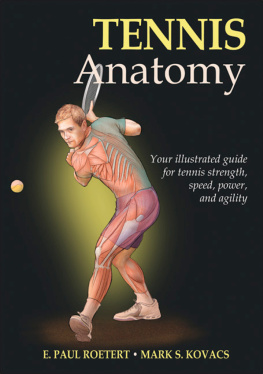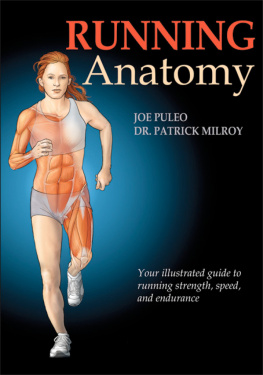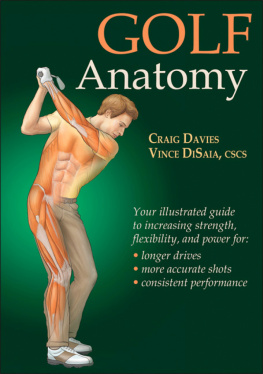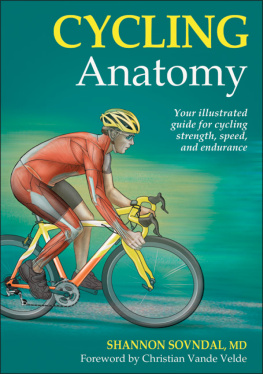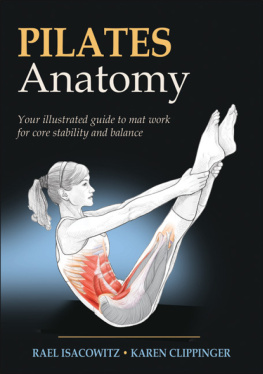HEALTHY BACK ANATOMY General DisclaimerThe contents of this book are intended to provide useful information to the general public. All materials, including texts, graphics, and images, are for informational purposes only and are not a substitute for medical diagnosis, advice, or treatment for specific medical conditions. All readers should seek expert medical care and consult their own physicians before commencing any exercise program or for any general or specific health issues. The author and publishers do not recommend or endorse specific treatments, procedures, advice, or other information found in this book and specifically disclaim all responsibility for any and all liability, loss, or risk, personal or otherwise, which is incurred as a consequence, directly or indirectly, of the use or application of any of the material in this publication.
 | Thunder Bay Press An imprint of the Baker & Taylor Publishing Group 10350 Barnes Canyon Road, San Diego, CA 92121 www.thunderbaybooks.com |
Copyright 2011 by Moseley Road Inc.Copyright under International, Pan American, and Universal Copyright Conventions.All rights reserved. No part of this book may be reproduced or transmitted in any form or by any means, electronic or mechanical, including photocopying, recording, or by any information storage-and-retrieval system, without written permission from the copyright holder. Brief passages (not to exceed 1,000 words) may be quoted for reviews.Thunder Bay is a registered trademark of Baker & Taylor.
All rights reserved.All notations of errors or omissions should be addressed to Thunder Bay Press, Editorial Department, at the above address. All other correspondence (author inquiries, permissions) concerning the content of this book should be addressed to Moseley Road, Inc., 123 Main Street, Irvington, NY 10533.www.moseleyroad.com.ISBN-13: 978-1-60710-505-3 (ebook)
CONTENTS

 L ower-back and neck pain are some of the most common health problems in adults today. They are the second-most prevalent reason for doctors visits, especially lower-back pain. With society having an increasingly older population and people living more sedentary lifestyles, back and neck pain are sure to afflict more people in the future than they ever have in the past.There are many contributing risk factors to back and neck pain. A partial list of these factors includes age, obesity, physical activity (both too little and too much), poor posture, psychological stress, trauma, and poor work ergonomics.Through awareness, action, and education, however, you can decrease your susceptibility to neck and lower-back pain. Make yourself aware of the potentially harmful factors in your lifestyle.
L ower-back and neck pain are some of the most common health problems in adults today. They are the second-most prevalent reason for doctors visits, especially lower-back pain. With society having an increasingly older population and people living more sedentary lifestyles, back and neck pain are sure to afflict more people in the future than they ever have in the past.There are many contributing risk factors to back and neck pain. A partial list of these factors includes age, obesity, physical activity (both too little and too much), poor posture, psychological stress, trauma, and poor work ergonomics.Through awareness, action, and education, however, you can decrease your susceptibility to neck and lower-back pain. Make yourself aware of the potentially harmful factors in your lifestyle.
Be cognizant of your overall health. Your body is constantly talking to youlisten to it. Pain and fatigue are two of the warning signs your body will send you. Take action, eat, rest, play, and exercise properly. Finally, educate yourself on how to do these things the right way and in the right amount.This book is written to give a generally healthy person the tools to prevent chronic back and neck pain. If you currently suffer from a serious back or neck injury, please consult with your physician before starting a stretching or strengthening program.It is of prime importance to make sure that you warm up your body before doing any of the stretches or strengthening exercises.
You do not want to stretch a cold or stagnant musclethis can lead to tearing of the muscle fibers. Running or walking for a few minutes, or even a hot shower or bath, will warm up your muscles before exercise. This will increase blood flow, lubricate your joints, and prepare you for a safe exercise regimen. Make sure to drink plenty of water, around sixty-four ounces per day. This will prevent dehydration and allow your body to excrete toxins that it will be breaking down during exercise.In the event that you do injure yourself, do not put heat on the injured area. Use ice on the injured area for the first forty-eight hours post-injury.
To apply ice properly, leave on the injured area for twenty minutes, then take it off for an hour, and repeat. You can repeat multiple times throughout the day. The purpose of the ice is to decrease inflammation. If the ice is left on for more than twenty minutes, you will get a reverse reaction and your body will bring fluid into the area, increasing inflammation and worsening the injury. If you ice properly and immediately after an injury, you can greatly reduce the duration and intensity of the injury. After the first two days, you can introduce heat to the affected area.
It is also advisable to seek a doctors opinion if you believe the injury warrants it.
Y our spine is a well-crafted feat of anatomical engineering, forming your bodys main upright support and allowing you to bend forward, backward, and sideways, as well as to twist and rotate. The spinal column also protects the spinal cord, which is the main pathway of the nervous system.The Vertebrae
Twenty-four bones, called vertebrae, are stacked in a column to make up the spine. The spine is divided into three regions: the cervical vertebrae, the thoracic vertebrae, and the lumbar vertebrae. The cervical vertebrae are the seven vertebrae of the neck. They are known as C1 through C7. The topmost cervical vertebra, called the atlas, supports your skull.
The twelve vertebrae of the upper and middle back, the thoracic vertebrae, are called T1 through T12. The vertebrae of the lower back, the lumbar vertebrae, are known as L1 through L5. The L5, the lowest vertebrae, connects to the top of the sacrum, which is a triangular bone at the base of the spine that fits between the two pelvic bones. At the base of the sacrum, at the very bottom of the spine, is the coccyx, or tailbone. In each of the vertebrae (except for the atlas), a large, round, flat area called the vertebral body makes up the bulk of the bony structure. Attached to the back of each vertebral body is a bony, triangular ring, which is made up of two kinds of bones: two pedicle bones connect directly to the back of the vertebral body, and two lamina bones form the outer rim of the bony ring. Where the lamina bones join is a bony projection called the spinous process, which is the pointy bone that you can feel and see at the back of your spine.
In each of the vertebrae (except for the atlas), a large, round, flat area called the vertebral body makes up the bulk of the bony structure. Attached to the back of each vertebral body is a bony, triangular ring, which is made up of two kinds of bones: two pedicle bones connect directly to the back of the vertebral body, and two lamina bones form the outer rim of the bony ring. Where the lamina bones join is a bony projection called the spinous process, which is the pointy bone that you can feel and see at the back of your spine.
Two bony knobs, called the transverse processes, also jut from the sides of each vertebra. Because the vertebrae are stacked in a column, the bony ring forms a tube that allows your spinal cord to pass through, while protecting it on all sides.
Next page

